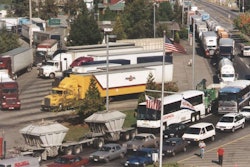Telvent, a real-time IT solutions and information provider, announced that it has been selected by CCR Rodoanel to implement its Telvent SmartMobility Tunnel solution on the western section of Sao Paulo’s Beltway, known as Rodoanel Mario Covas. Once completed, the Sao Paulo Beltway will enable better allocation of traffic flows across the Metropolitan Region of Sao Paulo (MRSP), as well as a reduction in traffic congestion in central Sao Paulo, Telvent says.
With a daily traffic flow of 240,000 vehicles and one of the widest and longest tunnels in Brazil, CCR Rodoanel and MRSP authorities have identified as a priority the enhancement of highway safety and security, especially in their critical infrastructures. Televent says the new tunnel management system will provide operators constant intelligence on what is happening inside the tunnel, enabling them to control traffic in real time and be prepared to respond quickly and effectively to any emergency situation occurring within the installations, helping to improve incident response times and enhance the efficiency of maintenance management.
Telvent says it will install Telvent SmartMobility Tunnel, based on its supervisory control and data acquisition technology, which will allow operators to centralize both tunnel infrastructure and traffic management, giving them a set of tools that will facilitate management, increasing security at the same time. Specifically, the following systems will be implemented and integrated into the control center: fire detection control, emergency and security signaling system, closed-circuit television surveillance, emergency intercom, variable message systems, lighting, ventilation and communications network.
“The Brazilian market is very important for Telvent,” says Ignacio Gonzalez, chairman and chief executive officer “This agreement demonstrates our active involvement in the Brazilian traffic sector and helps CCR Rodoanel and MRSP towards reaching the goal of improved safety throughout the road infrastructure network.”











